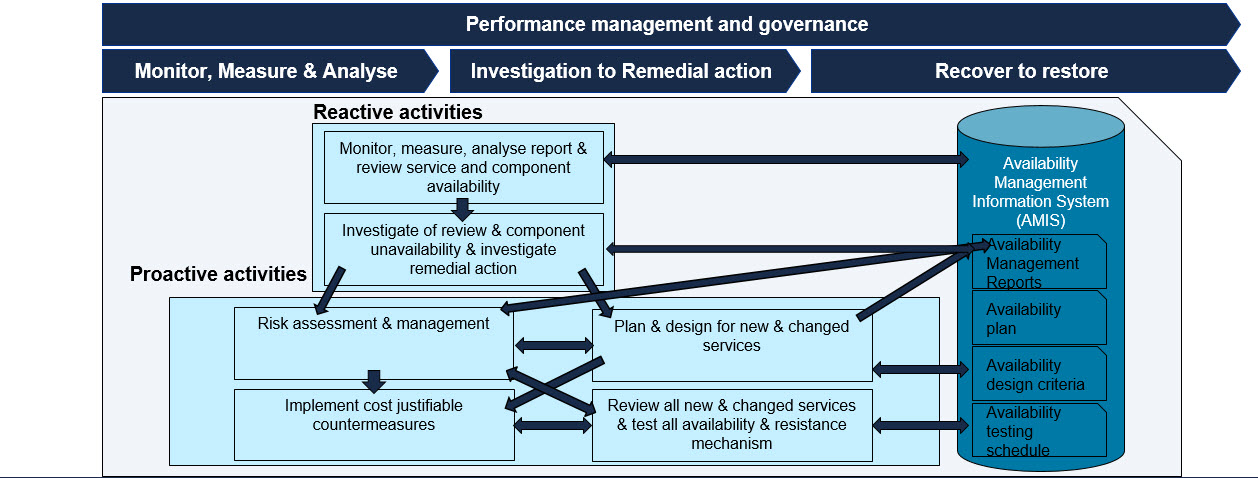Background
In many cases ITSM Availability Management Process is overlooked due to other frontline processes such as incident, problem and change management. I have provided a summary of this availability management process and significance below. I hope that the information is useful for your organisation in order to define and implement the process.
Objectives:
- Availability management has to ensure that the delivered availability levels for all services comply with or exceed the agreed requirements in a cost-effective way and enables the business to satisfy its objectives.
- Provide a range of IT Availability reporting to ensure that agreed levels of Availability, reliability and maintainability are measured and monitored on an ongoing basis.
- Create and maintain a forward looking Availability Plan aimed at improving the overall Availability of IT Services and Infrastructure components to ensure existing and future business Availability requirements can be satisfied.
Scope:
- Designing, implementing, measuring, managing and improving IT services and the components that are used to provide them.
- Services and processes:
- Business processes
- Future business plans and requirements
- Service objectives, current Service Operation and delivery
- IT infrastructure, data, applications and the environment
- Priorities of the business in relation to the services
Industry Good Practice for this Process

Availability management is part of service design and it is one of the critical process because the reliability of a service or component indicates how long it can perform its agreed function without interruption.
Activities – Reactive (Executed in the operational phase of the lifecycle)
- Monitoring, measuring, analysing and reporting availability of services and components
- Unavailability analysis
- Expanded lifecycle of the incidents
- Service Failure Analysis (SFA)
Activities – Proactive (Executed in the design phase of the lifecycle)
- Identifying Vital Business Functions (VBFs)
- Designing for availability
- Component Failure Impact Analysis (CFIA)
- Single Point of Failure (SPOF) analysis
- Fault Tree Analysis (FTA)
- Risk Analysis and Management
- Availability Test Schemes
- Planned and preventive maintenance
- Production of Projected Service Availability (PSA document
- Continuous reviewing and improvement
Inputs/Outputs
Inputs:
- Business information, organisation strategy, financial information and plans
- Current and future requirements of IT services
- Risk analysis
- Business impact analysis
- Service portfolio and service catalogue from service level management process
- Change calendars and release management information
Outputs:
- Availability management information systems (AMIS)
- Availability plan
- Availability and restore criteria
- Reports on the availability, reliability and maintainability of services
Summary
In summary, ITSM Availability Management measures three important aspects: how long a service can perform without interruption (Reliability), how quickly a service can be restored when it has failed (Maintainability) and how effectively a third party supplier deliver their services (Serviceability). These three aspects are key performance measures in ITSM availability management. Availability Management has to be discussed at the design phase of IT Service Management. Hope you found the above information useful. Thanks

Thanks for sharing the blog about the ITSM solutions and its process in which you explained everything in detail which is very easy to understand.Keep it up.